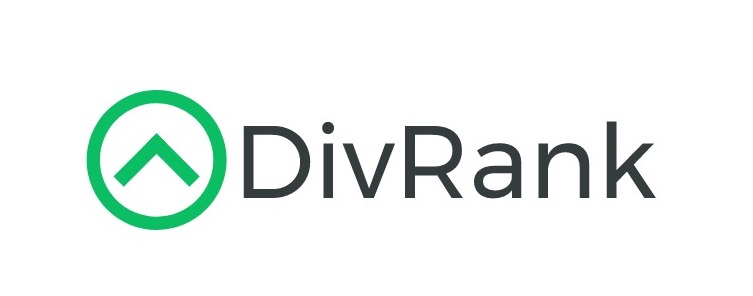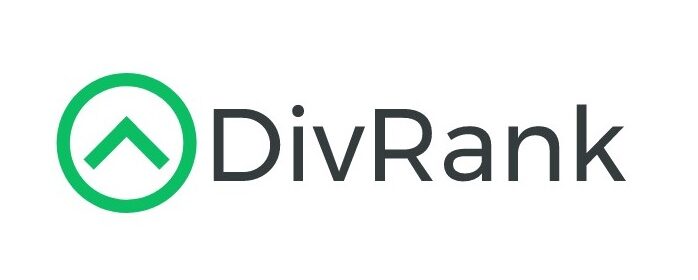If you’re building a passive income portfolio with dividend-paying stocks, it’s not just about picking high-yield names or well-known companies. One of the biggest influences on how your dividends perform over time is the economy itself. Markets move through natural cycles—expansion, peak, recession, and recovery—and each phase affects your dividend income differently. Knowing what to expect at each stage can help you make better decisions, avoid common pitfalls, and keep your income flowing, even when the economy takes a turn.
Let’s walk through how each phase impacts dividend stocks, what sectors tend to do well, and what smart investors can do to stay prepared.
Expansion: When the Winds Are at Your Back
An economic expansion is that stretch when everything feels like it’s clicking. GDP is growing, jobs are plentiful, consumer spending is strong, and businesses are optimistic. For dividend investors, this is often a rewarding time. Company earnings rise, and many businesses start increasing their dividend payouts. Stock prices tend to move higher, which adds to your total return if you’re reinvesting dividends.
Sectors that tend to shine in expansions are the cyclical ones—think consumer discretionary (retail, travel, entertainment), technology, and financials. These are companies that benefit when people and businesses are spending freely. Banks, for example, lend more when credit is cheap and demand is high, and tech companies enjoy strong demand for devices, software, and services.
Even though defensive sectors like utilities or consumer staples may not lead during this phase, it doesn’t mean they’re not worth holding. They bring stability and consistent income—key ingredients in a well-balanced dividend portfolio.
What to do in expansion: Take advantage of growth by reinvesting dividends and adding exposure to sectors benefiting from economic momentum. But don’t chase unsustainably high yields—if a company’s stock is lagging in a booming economy, it might be a red flag.
Peak: A Time to Start Watching Your Step
Eventually, every expansion slows. The peak phase is when growth starts to flatten out. Inflation might be rising, interest rates are usually heading up, and consumer enthusiasm cools. The Federal Reserve may step in to tighten policy to keep inflation in check, which can put pressure on borrowing and spending.
For dividend investors, this period can be tricky. Earnings are still strong, but companies become more cautious. Some may hold off on dividend hikes, anticipating leaner times ahead.
Energy and materials often perform well at this stage, as commodity prices are typically elevated. Financials might also see benefits from higher interest rates, though rising rates can eventually weigh on loan demand and bank margins. Some investors start rotating into safer dividend plays—like healthcare or consumer staples—well before the downturn officially starts.
What to do at the peak: Reassess your portfolio’s exposure to riskier sectors. Begin shifting toward companies with a strong history of dividend stability. This isn’t a time to panic—but it’s smart to start preparing for the next phase.
Recession: The Real Test of Your Dividend Strategy
When the cycle turns into a recession, things get more challenging. Unemployment rises, spending slows, corporate earnings shrink, and credit tightens. For dividend investors, this is where portfolio construction really gets put to the test.
Some companies will cut or suspend dividends—especially if their businesses are highly cyclical or their payout ratios were too aggressive. But others, particularly those in essential industries, will fight hard to maintain their payouts.
Consumer staples (groceries, personal care), utilities, and healthcare tend to hold up best in downturns. People still buy electricity, medication, and basic goods, even in tough times. These companies often have steady cash flows and conservative payout policies, which helps them protect their dividends when others are struggling.
In contrast, more sensitive sectors like industrials, real estate, and discretionary consumer goods usually take a hit. Banks may suffer loan losses, retailers see sales drop, and manufacturers face falling demand.
What to do in a recession: Stay focused on quality. Companies with solid balance sheets, stable earnings, and a history of consistent dividend payments are your allies. If you’ve built a resilient portfolio, your income should remain fairly steady—even if a few names make cuts.
Recovery: Getting Back on Offense
The recovery phase is when the economy begins to stabilize and grow again. Job growth resumes, consumer confidence returns, and businesses slowly start investing in growth. It’s an ideal time for dividend investors to lean in—many companies that held or trimmed dividends during the recession begin to raise them again.
Early in the recovery, cyclical sectors like industrials, real estate, and financials often bounce back. These areas were hit hard during the downturn, but as the economy strengthens, they typically rebound quickly. If you’re adding to your portfolio during this time, you can often lock in attractive yields before stock prices fully recover.
Some dividend aristocrats—companies with decades of uninterrupted dividend increases—barely flinch during recessions and go right back to raising payouts in the recovery. Others that paused or reduced dividends may reinstate them, or even launch new ones if cash has built up. This is also when dividend growth rates may accelerate as companies catch up.
What to do in recovery: It’s a great time to review your holdings and rebalance. You might shift some weight from ultra-defensive positions into quality cyclicals that are poised for a comeback. Consider reinvesting dividends aggressively to capture long-term gains.
Dividend Safety Over Yield: Why Reliability Wins in Tough Markets
For income-focused investors, especially those building a portfolio for long-term passive income, one of the most important lessons is this: a high dividend yield isn’t always a good thing. In fact, it can be a warning sign. That 8% or 10% yield might seem tempting, but if it’s not backed by a strong business and sustainable cash flow, it could vanish the moment the economy hits a rough patch.
High yields often result from falling stock prices—meaning investors are nervous about the company’s future. Maybe profits are dropping, debt is rising, or cash flow is shrinking. In downturns, these are exactly the companies most likely to cut or suspend their dividend. If you’re relying on that income, a dividend cut hurts twice—your cash flow drops and the stock price often falls even further.
Instead, reliability should be your guiding principle. Companies with a history of consistent dividend payments—even through recessions—are often financially stronger, with better balance sheets and more predictable earnings. These are businesses that treat dividends as a core commitment, not an afterthought. A great example is the group known as Dividend Aristocrats – companies that have raised dividends every year for at least 25 years. They may not have the flashiest yields, but they’ve proven their durability. During the 2008 crash, while the broader S&P 500 fell 37%, Dividend Aristocrats declined only about 22%—and kept paying and raising dividends.
What helps a dividend stay reliable? It starts with a healthy payout ratio—the percentage of earnings or free cash flow a company distributes as dividends. Companies with lower payout ratios (typically under 60%) have room to absorb earnings declines and still maintain their payouts. But companies paying out nearly all their profits don’t have that cushion. One bad quarter, and the dividend is at risk.
So instead of chasing the highest yield, look for companies with solid fundamentals, reasonable payout ratios, and a history of steady growth. A dependable 3% dividend that grows every year will usually serve you far better than a risky 10% yield that gets slashed.
In the end, passive income isn’t just about the size of the yield—it’s about knowing that your income will keep coming, rain or shine. Reliability is what makes a dividend portfolio last.
Strategies to Keep Your Dividend Income Flowing Through the Full Cycle
Building a resilient dividend portfolio is less about chasing the highest yields and more about setting yourself up for income that holds steady through every phase of the economic cycle. Like a balanced meal, you want a mix of ingredients—stocks from different sectors, a blend of defensive and cyclical names, and a focus on quality that can weather the inevitable ups and downs.
Spread Your Bets Across Sectors
Different sectors perform differently depending on the economic backdrop. Financials and consumer discretionary tend to thrive in expansions, while utilities and healthcare shine during recessions. By diversifying across sectors, you avoid putting your income stream at the mercy of one part of the market. For example, if your bank stocks slow dividend growth during a downturn, holdings in consumer staples or utilities may help fill the gap. Ideally, no single sector should make up more than a quarter of your portfolio. This kind of balance helps smooth out income when some parts of the economy are struggling and others are holding steady.
Focus on Quality Companies
Dividend reliability should be at the core of your strategy. This means choosing companies with strong balance sheets, consistent earnings, and a history of paying—and ideally increasing—dividends through all kinds of markets. Dividend Aristocrats, which have raised their payouts for 25 or more consecutive years, are a great example. They’re not just dependable; they often grow dividends steadily, even in recessions. Look for companies with manageable debt, positive free cash flow, and payout ratios that leave room for flexibility. Even if they don’t offer the highest yields, they bring consistency—something that matters a lot more when the economy hits a rough patch.
Monitor the Numbers Behind the Payouts
It’s important to keep an eye on the financial health of the companies you hold. A payout ratio above 70 percent, for most industries, could signal vulnerability. For real estate investment trusts or utilities, which are designed to pay out more, a higher ratio might be acceptable—but should still be monitored. If you see that a company is increasingly paying out more than it earns, or taking on more debt to keep the dividend going, it may be time to reassess.
Rebalance Without Overreacting
You can’t time the cycle perfectly, but you can stay prepared. After a long bull run, your more aggressive holdings might outweigh your defensive ones. That’s a good time to trim a little and increase your exposure to sectors that tend to do better in downturns. During a recession, the reverse might be true—adding some exposure to cyclical sectors can help position your portfolio for the next recovery. Rebalancing once or twice a year is usually enough to keep things in check. The goal isn’t to predict every turn, but to make sure your portfolio isn’t leaning too far in one direction as conditions change.
Keep Some Flexibility
Holding a small amount of cash or short-term bonds can give you the freedom to act when opportunities arise. If the market takes a dive and a high-quality dividend stock drops in price but maintains its payout, that cash gives you the ability to buy in at an attractive yield. This small buffer can also help you avoid selling long-term holdings during a temporary downturn just to cover short-term expenses.
Reinvest When You Can
If you’re still in the accumulation phase, reinvesting your dividends can supercharge your returns over time. Even if you’re already drawing income, consider reinvesting a portion when the market is down. This lets you buy more shares at lower prices, increasing your future dividend income when things turn around. Over time, the compounding effect can be powerful.
Each of these strategies builds on the others. Diversifying across sectors helps keep your portfolio’s overall payout ratio healthy. Focusing on quality means the companies you invest in are more likely to weather downturns without slashing dividends. Regularly reviewing and rebalancing keeps you prepared—not reactive—as the economy shifts.
By focusing on long-term stability and avoiding the common traps of yield-chasing or over-concentration, you can build a dividend portfolio that delivers reliable income across the full cycle. A little preparation goes a long way, and the reward is steady cash flow that keeps coming through good times and bad.

